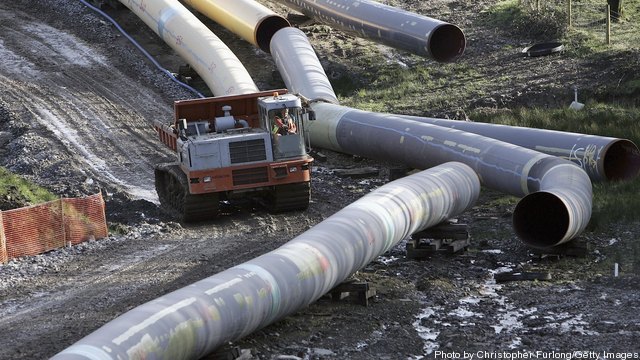
Global natural gas demand is expected to steadily increase in the coming decades as developing economies continue growing and the West uses more of the fuel. Established energy trade patterns are also expected to shift eastward to emerging market demand centers as more gas is produced in the western hemisphere. Business activity at one of the world’s major engineering firms appears to be evolving in step with these emerging energy market trends.
“The best way to get $8 [natural] gas is to act like it’s going to be $3,” Dean Oskvig, President and CEO of Black & Veatch’s energy business recently told Breaking Energy. Increasing US unconventional gas reserves and output, which have kept US prices below historical norms, could in spur consumption and shift supply/demand fundamentals so that prices rapidly increase. The threat remains unrealized for now, with natural gas prices still near historic lows.
There is much talk in the US of greater natural gas use for power generation, industrial use, heating, exports and transportation that together could cause consumption to spike above current levels. And as gas production in the US – and Canada – grows, demand from higher-value overseas markets in Europe and Asia increases. “There is a trifurcated natural gas market globally,” said Oskvig, where prices in Asia and Europe are currently much higher than in North America.
The best way to get $8 [natural] gas is to act like it’s going to be $3″ Oskvig
“By 2022 Black & Veatch is projecting 4 billion cubic feet per day of LNG exports from Canada and the Lower 48 states with an additional 2 Bcf/d from Alaska coming online in 2023. Currently, projected United States (Lower 48) exports include 2 Bcf/d from the Cheniere facility in South Louisiana, but we anticipate revising this figure upward in future reports closer to ~6 Bcf/day.
This is in keeping with the recent DOE study release indicating a likely easing of regulatory constraints, and a general view that the global market will support” additional US LNG export volumes, the company said in an email.
“In the near term, Asia represents a strong market for Texas/Louisiana gas, and in our estimate, likely export terminal locations will be found in South Louisiana (based on its market liquidity) and South Texas, where new projects provide outlets for stranded gas to Asian markets via the Panama Canal.”
So How is B&V Responding to these Emerging Trends?
China’s seemingly insatiable thirst for energy has resulted in rapid LNG import infrastructure expansion.
And in addition to the higher profile LNG terminals being constructed along the coast, China is utilizing smaller-scale liquefaction and regasification projects to transport gas to otherwise isolated inland regions via truck. B&V has worked on “several” such projects in China according to Oskvig, including a 200,000 metric ton/year facility in Erdos, inner Mongolia that is featured on the B&V website.
Interestingly, smaller-scale inland LNG projects appear to be gaining traction in North America as well. A recent EnCana and Ferus LNG joint venture announced plans to construct a facility in Western Canada designed specifically to fuel “high-horsepower (“HHP”) engines used in drilling rigs, pressure pumping services, and heavy-duty highway and off-road trucks. Other HHP applications for this LNG supply include rail, mining, and remote power generation,” the companies said in a statement.
Another example of natural gas taking a larger share of the global energy mix – as well as the inter-related nature of global energy development – involves the proliferation of floating LNG technology. Many countries are siting LNG terminals offshore near major demand centers because these facilities are often less expensive, easier to site and offer greater flexibility than constructing permanent onshore facilities. Companies are also using the technology to develop remote offshore gas fields.
Black & Veatch is conducting the engineering and procurement portion of a floating liquefaction and regasification project being constructed in China for deployment in Colombia.
Both the inland LNG and floating LNG projects utilize the patented PRICO process, which at its most basic level is “an energy-efficient process to make energy,” said Oskvig.
The process was also selected by Excelerate Energy, one of the world’s leading floating LNG developers, with a fleet of 9 floating storage and regasification units. Floating LNG appears to have carved out a solid niche in the global LNG business and Oskvig thinks B&V will be involved in “several more” such projects going forward.
